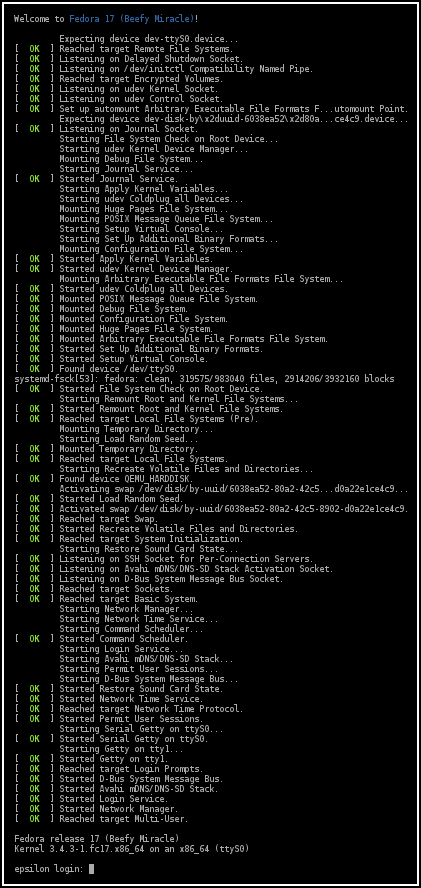The systemd entry on the Arch. An overview of systemd features. SysV and LSB init scripts and works as a replacement for sysvinit.
Other parts include a logging daemon, utilities to control basic system configuration like the hostname, date, locale, maintain a list of logged-in users and running containers and virtual machines, system accounts, runtime directories and settings, and daemons to manage simple network configuration, network time synchronization, log forwarding, and name resolution. Please see systemd.
Comme Upstart, systemd utilise des fichiers de configuration correspondant aux différents services à manipuler. Separate instances are started for logged-in users to start their services.
Linux operating systems. Il peut fonctionner comme un remplaçant de sysvinit. WSGI is a new-style daemon for systemd. It can notify status change and readyness.
When uWSGI detects it is running under systemd, the notification system is enabled. In systemd, a unit refers to any resource that the system knows how to operate on and manage. These resources are defined using configuration files called unit files. In this guide, we will introduce you to the different units that systemd can handle.
A D-Bus bus name to reach this service. SYSTEMD _UNIT=UNIT. The workflow to “activate” an OSD is by relying on systemd unit files and its ability to persist information as a suffix to the instance name.
Portable Services Introduction. Welcome to the SUSE product documentation home page. On this page, find technical documentation, such as quick starts, guides, manuals, and best practices for all SUSE products and solutions.
Systemd based Robot Intialization¶. View Unsupported Products. The program systemd is the process with process ID 1. It is responsible for initializing the system in the required way. From the systemd man page: A unit file is a plain text ini-style file that encodes information about a service, a socket, a device, a mount point, an automount point, a swap file or partition, a start-up target, a watched file system path, a timer controlled and supervised by systemd, a resource management slice, or a group of externally created processes.
User services, on the other han run in a separate systemd instance tied to a specific user. Note that systemd assumes here that the process started by systemd will continue running until the service terminates. If the program daemonizes itself (i.e. forks), please use Type=forking instead. Since no ExecStop= was specifie systemd will send SIGTERM to all processes started from this service, and after a timeout also SIGKILL.
D’habitude, on utilise crontab pour gérer les tâches récurrentes, mais vu que systemd prend la main partout … autant s’y habituer dès maintenant. L’outil s’appelle systemd.

Dans mon cas, je veux juste programmer une tâche qui lance la commande node app. In this article we will learn how they are structured and some examples of their usage. This is reproducible wi.
Actuellement, le présent tutoriel est orienté sur la gestion des services. It is a good place to look when a failure has occurred.
To be able to implement this feature, systemd has to cleanup all resources owner by the user. Running the service with a read-only filesy. One of the main advantages of systemd is that it considerably speeds up boot time by aggressively paralleling service starts.

Furthermore, systemd only starts a service when it is really needed. Daemons are not started unconditionally at boot time, but rather when being required for the first time. Ask Question Asked years, month ago.
Active years, month ago. I have some project which uses libdbus for IPC.
Aucun commentaire:
Enregistrer un commentaire
Remarque : Seul un membre de ce blog est autorisé à enregistrer un commentaire.